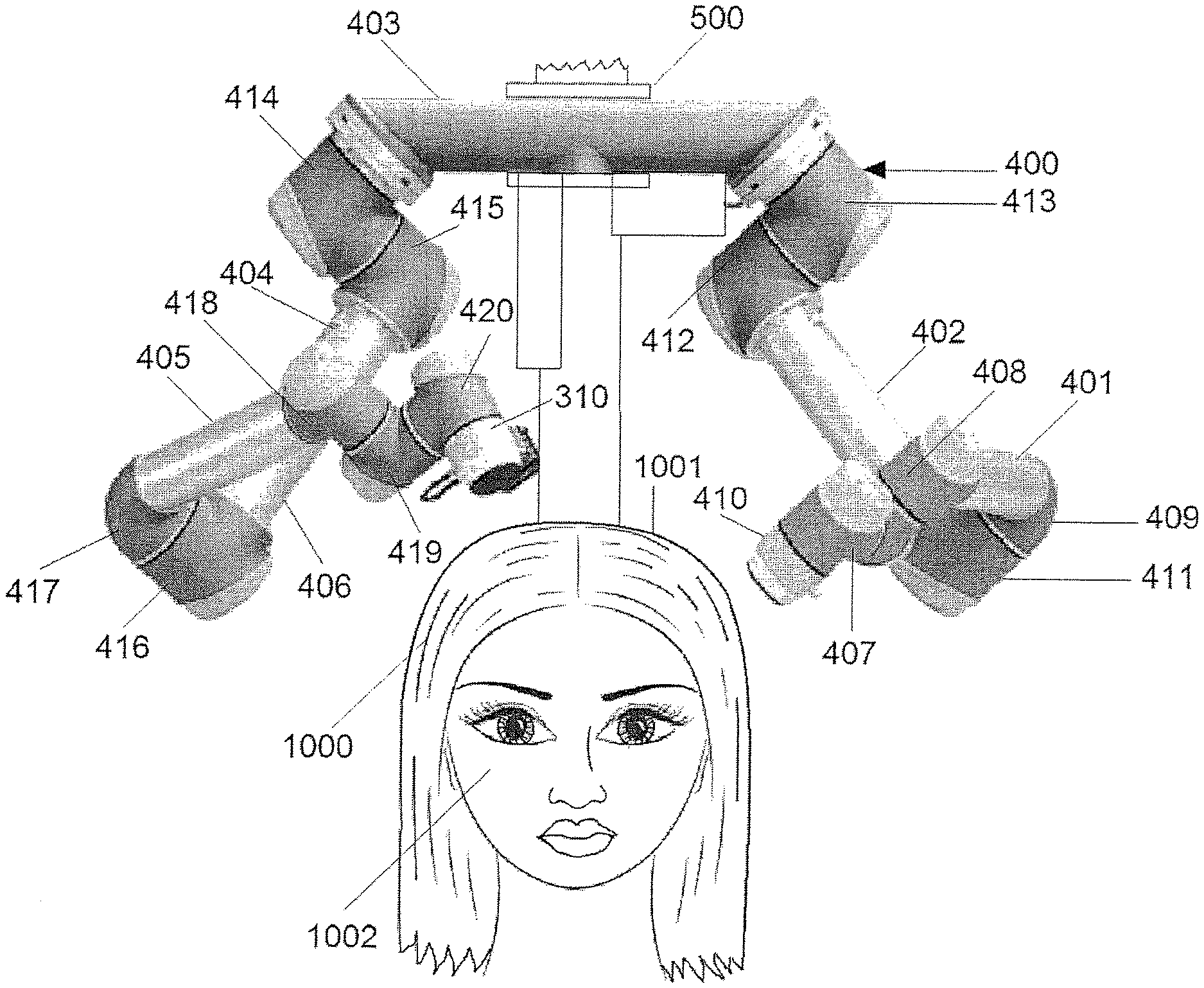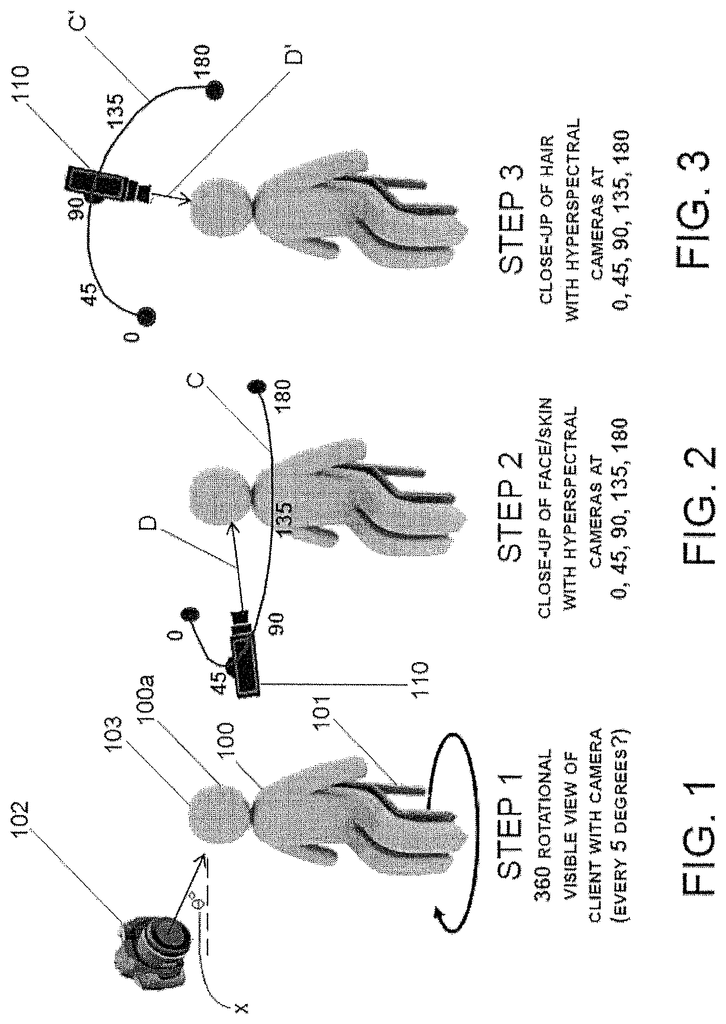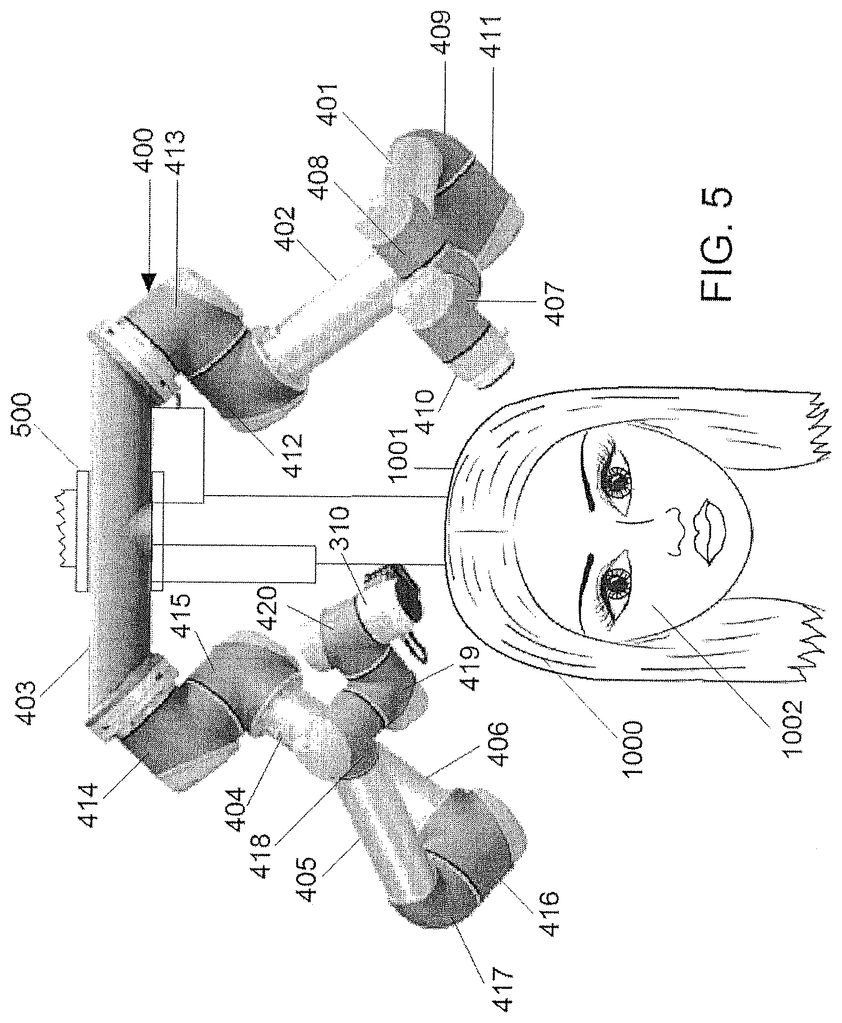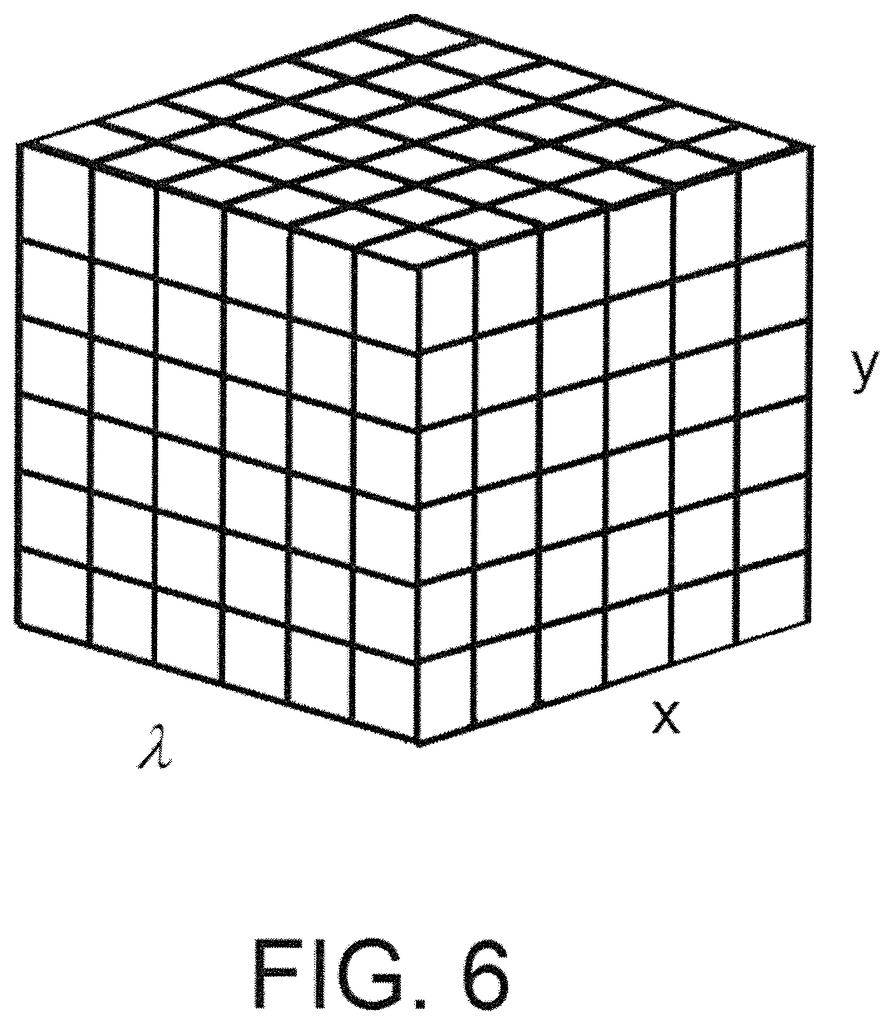Invented by David J. Witchell, Erlend Olson, ColorCulture Network LLC
The market for hair and skin analysis systems, methods, and devices is driven by several factors. Firstly, the rising prevalence of skin and hair-related disorders such as acne, hair loss, and dandruff is driving the demand for advanced analysis systems. Secondly, the increasing awareness of the benefits of personalized hair and skin care is fueling the demand for customized hair and skin products. Thirdly, the growing popularity of e-commerce platforms and online beauty stores is providing a significant boost to the market.
The market for hair and skin analysis systems, methods, and devices is segmented into several categories based on the type of product, application, and end-user. The product segment includes devices such as hair and skin analyzers, imaging systems, and software. The application segment includes diagnosis, treatment, and monitoring of hair and skin conditions. The end-user segment includes salons, spas, clinics, and home users.
The market for formulated hair and skin products is also growing rapidly. Formulated hair and skin products are customized products that are designed to meet the specific needs of individual users. These products are formulated based on the analysis of the user’s hair and skin type, texture, and condition. The market for formulated hair and skin products is driven by several factors. Firstly, the increasing awareness of the benefits of personalized hair and skin care is driving the demand for customized products. Secondly, the growing popularity of e-commerce platforms and online beauty stores is providing a significant boost to the market.
The market for formulated hair and skin products is segmented into several categories based on the type of product, application, and end-user. The product segment includes shampoos, conditioners, serums, creams, and lotions. The application segment includes hair care, skin care, and personal care. The end-user segment includes salons, spas, clinics, and home users.
In conclusion, the market for system, method, and device for analysis of hair and skin and providing formulated hair and skin products is rapidly growing. The increasing awareness of the importance of personal grooming and hygiene, the rising prevalence of skin and hair-related disorders, and the growing popularity of e-commerce platforms and online beauty stores are driving the demand for advanced and effective hair and skin analysis systems, methods, and devices, as well as formulated hair and skin products. The market is expected to continue to grow in the coming years, providing significant opportunities for businesses operating in this space.
The ColorCulture Network LLC invention works as follows
A method, a system and a device for determining properties of skin and hair.” The system, method and device allows for the application of products to hair or skin to achieve the desired result. Hair or skin properties can be measured, including the chemical composition of hair and substances on, absorbed, or adsorbed into or on the hair. The information obtained from the hair and skin is then used to create a product that will produce the desired result.
Background for System, Method and Device for Analysis of Hair and Skin and Providing Formulated Hair and Skin Products
1. “1.
The present invention is a device, method, or system for evaluating hair and skin, and for generating or providing a product application that corresponds.
2. “2.
Beauty treatments involve using products to improve, repair, or rejuvenate skin, hair, or the body of a person to change or improve their appearance. Hair coloring is one example of a beauty procedure. Human hair is colored using hair coloring compositions. Individuals can apply them at home or in professional salons. Hair coloring can be used to achieve a certain look. For some, this may mean returning graying or thinning hair to their original color. Others may want to change the color of their hair, perhaps to match a new style, fashion, or trend. The skin can be enhanced or treated with various compositions. These include topical compositions and compositions that are absorbed by the skin. Compositions for skin treatment can include lotions or oils, creams, liquids or ointments and powders. Some people treat their skin with a pigment to give it a certain color. Individuals also use cosmetics to tone the skin and hide blemishes. They may also use compositions which alter the color or effect of the skin. Skin can react to certain factors, including aging or elements such as wind, sun, humidity, or lack of it. Some treatments can be applied to skin in order to correct an unwanted, unhealthy or undesirable condition. “This applies to the skin on an individual’s entire body including the skin visible on their face, arms and legs as well as on the scalp, which is usually covered by hair growth.
The epidermis is the outermost layer of skin. Dermis is next, followed by a fat-like layer. The epidermis protects against foreign substances entering the body (e.g. bacteria, viruses), and guards internal body structures (e.g. organs, nervous system, muscles and so on). In areas that require more protection, such as the bottom of the foot, the epidermis can be thicker. The epidermis contains keratin. The outermost epidermis is composed of dead cells. These cells are arranged in layers, commonly known as stratum corneum. Dermis is the next layer, which is composed of elastic and fibrous tissue. Dermis is composed of collagen and elastin. Dermis contains nerve endings, sweat and sebaceous (also called oil glands) glands, blood vessels and hair follicles. The fat layer is located below the dermis. It contains fat cells held together by fibrous tissues.
Hair is a substance in the body made of a lipophilic layer of cuticle, a hydrophilic cortex, and a medulla. The hair roots are contained in tubular-like sacs on the skin or scalp called follicles. Hair is made up of proteins, amino acids and other raw materials that are bonded together to form the structure. Human hair is composed of proteins, lipids and water. It also contains trace elements, pigments and trace elements. About 91 percent is made up of protein. Keratin is the main hair protein. The hair that comes out of the follicles is a non-living protein fiber. Keratins, a type of protein, are not only found in hair but also in the skin and other tissues of mammals. The follicle produces cells that have a nucleus, and are able to absorb keratin. The nucleus of the hair cell dies when the hair cells extend out from the skin or scalp. Hair color is determined by the pigmentation in hair follicles. This involves two types, namely eumelanin (dark) and pheomelanin (light). Eumelanin is associated with darker hair. The more eumelanin, the darker the hair. If less eumelanin exists, the hair will be lighter. Over time, the melanin level of a person?s hair can change. Gray hair, for example, can be a sign of a person’s changing melanin level. Hair follicles can also be more than one colour.
Hair is composed of several components, including carbon (51%), oxygen (21%) nitrogen (17%) hydrogen (6%), sulfur (5%). These elements combine to form amino acids proteins. The following amino acids are considered representative of healthy human hair:
AMINO ACIDS PERCENTAGE OF HEALTHY HAIR FIBERnCysteine 17,5%nSerine 11,7%nGlutamic acid 11,1%nThreonine 6,9%nGlycine 6,5%nLeucine 61%nValine 5,9%nArginine 5,6%nAspartic acid 5.0%nAlanine 4,8%nProline 3,6%nIsoleucine 2,7%nP
The compositions of hair fibers often cause the fiber to react to external elements such as heat (which can be used to straighten or curl the hair) or compositions applied to the hair such as shampoos and conditioners. Hair fibers can also react to high temperatures. This can alter the structure or shape of the fiber.
There have been several attempts to determine the hair color in order to match it. Some methods use a visible spectrum of colors, UV, infrared and even a spectrophotometer to measure the reflectance. Averaging hair colors over a large area is one of the methods used to determine hair color. In such cases, averages can lead to incorrect readings. For example, hair with some white may be misread as being light brown. This would result in different treatment results and could even be inaccurate.
However variables such as hair and skin compositions or compounds present on the skin or hair as a result from exposures or production by the body may influence the final hair or skin after a treatment. If a chemical treatment has been applied to a hair, the hair may react differently if a second treatment is applied. Human hair and skin can also vary in composition. These variations may also affect the outcome of a treatment. “In many cases, the individual who wishes to receive a hair or skin treatment will select their desired outcome. For example, they may choose a hair color, skin tone, or characteristic for their skin (or hair) such as moisturizer.
The technician, or any other staff member, must assess the hair and skin and then use their experience and observation to come up with a solution. This determination is subject to error, and the results are usually dependent on the level of training, experience, background knowledge, and observation. In many cases, the cause or condition of hair or skin may not be visible. A salon technician or staff member may handle different clients from time-to-time, or even switch back and forth, which can lead to further variation. Even when a technician or salon personnel is working with a client or individual, any deviation from the standard will be largely experimental. Individuals can also change over time due to factors like age, health conditions and changes in diet. These changes can affect how the treatment is applied, its appearance, or whether it is suitable. “In some cases, it is only after treatment that you notice a change.
Some salon services may cause damage to the hair by over-processing it or under-processing it. Over-processing can result in damaged and dry hair that is often brittle, with a straw-like texture. The color dye, which is usually mixed in the salon, can be the cause of over-processing. The failure of salon staff to monitor the treatment may also lead to over-processing. Incorrect formulations combined with a lack of monitoring can produce undesirable results. Even if the formulation is incorrect, the monitoring can’t fix the problem. The salon staff may be hindered by a formula that has been improperly formulated or mixed, regardless of how carefully they follow procedures. Before beginning a service, a salon technician is usually required to inspect the hair of a client. It is important to examine the hair characteristics. One may make observations about the condition of the hair as well as the individual factors, including the density of the hair (the number of hairs per unit area, like a square inch), hair texture (hair shaft thickness, thin or thick), or resistance (whether or not the hair takes to chemicals or straightening). It is difficult for hair salon staff to inspect an individual’s head in the same way. Different salon personnel may notice different characteristics, give more weight to certain ones, or even observe them differently. It could be due to their background or how they provide a service. Even when the hair is examined, the results can be different from what was intended due to the differences in salon personnel and their observations. Hair and hair treatments may react negatively to a new chemical, such as a hair dye. In order to achieve a desired hair color, it is possible that the result will be something unexpected, like red or green-tinted hair. Corrections may be required for some chemical reactions, which can take more time. “In some cases, corrections may be required days after an incorrect chemical has been applied.
A method, system and apparatus for determining properties of skin and hair are provided. The system, method and device allows for the proper selection of treatment applications to be applied to an individual’s hair or skin to achieve the desired result. Hair properties can include hair composition, chemical components, coatings, and other substances adsorbing or absorbed on the surface of the hair. In preferred embodiments, hyperspectral imaging components can be used to extract information from hair or skin.
According to certain preferred embodiments the imaging component can comprise one or multiple hyper-spectral camera placed at a suitable range from the hair or skin of the individual to be measured. According to certain preferred embodiments hyper-spectral camera are placed at a distance of 2-5 feet from an individual’s skin or head.
Accordingly, some embodiments are imaging components such as hyperspectral cameras that measure 2D arrays as opposed to 1D, or single ‘diodes’. The hyper-spectral configuration of the camera views the hair as an entire spectral cube, preferably measured from the angle. Hyper-spectral imaging elements, such as hyper-spectral camera, can view the entire person’s face as a cube.
Preferred embodiments” of the invention can measure a range of wavelengths, including wavelengths in the visible and thermal region, such as 400 nm up to 12,000nm. The invention’s method, system, and device measure hair components. The present invention does not only measure the visible hair color. While hair components may give hair particular colors (such as reflectance of certain wavelengths of light, which we perceive as hair color), it also measures other factors. The invention provides information that identifies a chemical composition in the hair or other substances on, attached to or affecting hair. The device, system, and method can be used to determine the composition of chemicals present in hair color. Examples include metal salt compounds and some common chemicals that affect hair and skin, like caffeine.
According to preferred embodiments the method, system, and devices implement hyper-spectral image components for determining the actual or potential health condition of an individual by measuring the hair, the skin, or the surfaces of hair or the skin. The measurement or detection, for example, of certain compositions present in the hair or on the skin of a person, could indicate a health problem or body activity. Hair color analysis compares colors. However, there are different components responsible for producing the color. The present invention provides a system, a method, and a device that not only measures the color spectrum, but also the compositions, of e.g., hair, skin, or other targets (treated or not). Preferred embodiments measure the composition using a device which includes the range of 3000nm-12000nm (as opposed to the 400nm-3000nm).
The device system and method can measure both skin and hair in one operation. Once the imaging component such as the hyperspectral camera records the information, by imaging the individual’s head, the hair and skin condition may be evaluated. The device, method and system preferably collect information on the hair and skin. In the same operation for example, the hair spectrum as well as the facial skin spectrum of the person may be obtained. Hyper-spectral data can be used to select and formulate hair and skin care products, as well as detect chemicals in the body of the person, rather than just topical chemicals applied on their hair or skin.
The system, method, and device can provide information about the chemical composition of the hair, or the hair itself, underneath or on top of the chemicals. The system, method, and device measures the underlying compositions of the skin or hair. For example, in the case of hair, hyper-spectral images are used to compute the composition, which gives information on how the hair will react to various chemicals and treatments such as bleaches and dyes. The information may be coordinated preferably with a system for dispensing or formulating hair or skin products. This allows the user to receive recommended or custom-formulated products such as shampoos and conditioners or coloring products and dyes. The hyper-spectral imaging can be used in conjunction with salon products, personal care products, and products purchased by an individual based on hyper-spectral analysis and information.
Embodiments” of the device, method and system measure surface as well near surface conditions. The surface of hair and skin can be measured in order to determine the coatings, component composition, or chemicals. Near surface areas of the hair or skin that may be beneath the surface may also be measured and evaluated. The system, method, and device can measure and evaluate the surface or near-surface conditions of an individual such as their hair and skin and determine if a health condition or other adverse condition exists. The present system, device and method can detect a health issue that exists somewhere else than where the measurements are being taken (e.g. not on the hair or the skin). The hyperspectral imaging method collects information, and devices and systems analyze the hyperspectral information in order to detect the presence of potentially harmful health conditions.
Click here to view the patent on Google Patents.





